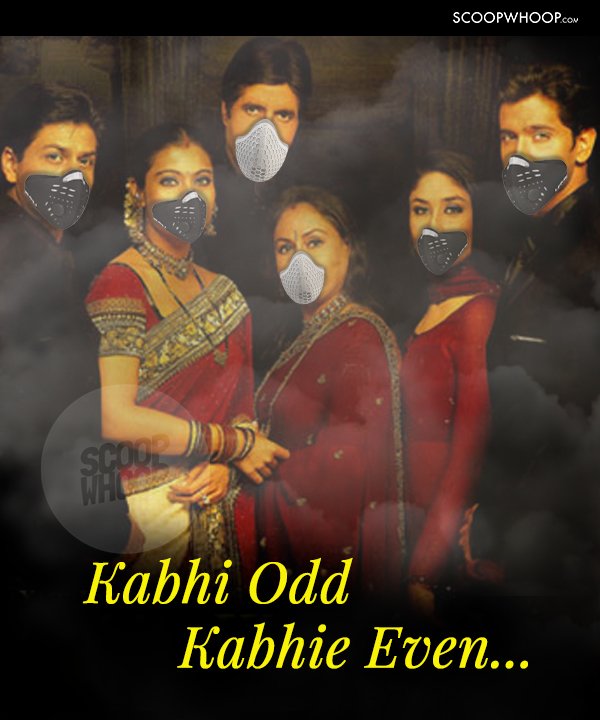‘Making Kin’ with odd-even scheme
Posted on November 15, 2019
“Sometimes odd, sometimes even” Poster credits: Sanil Modi from scoopwhoop.com
Enveloped in a thick blanket of smog, the capital of India once again finds itself battling with severe levels of air pollution. Delhi reached its peak when the air quality index shot above 900 in November 2019 (vs the acceptable levels of 100), leading to the declaration of public health emergency in the state. Vehicular pollution is considered as one of the factors playing into the high levels of pollution. In light of these events, the Delhi government launched the third phase of the odd-even rationing scheme. As part of the scheme, vehicles with odd last digit in the registration number would ply on odd days and those with even last digit on even days. With approximately 40 percent population relying on personal vehicles for daily commute this rule would act as a major disruption in their daily life.
After its first and second phases in 2016 and 2017 respectively, various organizations raised questions on the effectiveness of the scheme and multiple studies illuminated the shortcomings of the scheme in combating the pollution levels. [3] However, for the purpose of this blog, I am not keen on the details of the scheme, of what worked, what did not or what would have been a better alternative. I am interested in exploring the social patterns that emerged as a result of the implementation of this scheme.
One day my brother, who lives in Delhi, was narrating a story about his carpool experience. As he animatedly spoke about his newly ‘discovered’ neighbor, his carpool buddy, the emergent self-organizing patterns became apparent to me. In the hustle of everyday life, he never got a chance to know his neighbors until recently when this scheme came into effect. This is not Bollywood, so there were no sparks of romance, nor was it a dramatic story of a stranger who changed his life. It was a rather dull story of mundane car rides shuttling between home and workplace. However, this simple act was laced with human interactions as they worked out their timings, accommodated each other during occasional delays, and settled on music preferences.
This modest story hints towards many other such stories that are brewing in the city, oblivious to the political agitation around the scheme. It’s too early for any shift in social behaviors to become evident, but it offers clues to altered social norms. In a modern city where social interactions are highly curated, it would be interesting to see if this plays any role in forging a new sense of community. We find our lives built around individual convenience and productivity. What societal structures does this act of ‘making kin’ with our neighbors promote?

While reading the theory of emergence [1], I wondered if this behavior exhibited by the people of Delhi held similarities to that of slime mold. As Steven Johnson explains, “The slime mold spends much of its life as thousands of distinct single-celled units, each moving separately from its other comrades. Under the right conditions, those myriad cells coalesce again into a single large organism.” Similar to a slime mold people oscillated between ‘it’ and ‘they’, under the changing ‘weather conditions’ (the enforcement of the rule).
-Ayushi Jain
—-
References:
[1] Emergence: The Connected Lives of Ants, Brains, Cities, and Software – Steven Johnson
[2] Thinking in Systems: A Primer – Donella H. Meadows